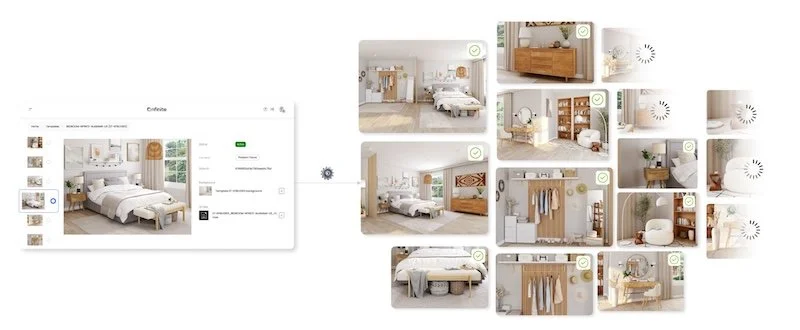An entrepreneur's guide: how to start a business in the UK
A well crafted business plan will make it easier for you to get started. As you prepare, write a concise document outlining your ideas on the key aspects of your business. Even if you’re currently running a side business, it’s important to identify potential risks and opportunities.
One essential step, especially for foreigners learning how to start a business in the UK, is to set clear goals and identify sources of funding for such ventures.
An important consideration in this process is securing a mail address for business, which adds legitimacy and aids in communication with clients and authorities.
A business plan does not have a specific form, it can be a so-called lean table or a structured text on 30 pages. Content is more important than form, but always think about the following issues:
● what service or product do you offer
● who buys from you and why
● who is your ideal customer or what are your main customer segments
● what is your competition, what are you better at, what are you worse at
● how much will your service or product cost
● how customers will find out about you
● how much it will cost you to start the business and where you will get the money
● how high will the regular expenses be
● what are the possible risks
All entrepreneurs, including self-employed persons with secondary activities, will have access to the data box after registering with a trade office. Think of it as an advantage - the data box system is not perfect, but it will facilitate any communication with the authorities.
Officials are obliged to notify you of everything with a date, so you no longer have to keep track of correspondence in your inbox. But keep in mind that, for example, tax returns can no longer be filed on paper but with a date (see below).
To get the most out of your data card, the Hoxton Mix specialists recommend the next list of actions:
● set a longer password validity period; otherwise, you will have to change it regularly (or connect the login to the data window with BankID)
● enable email notifications when a new message is sent to your data card
● save important messages on your computer (messages are deleted from the data box 90 days after delivery)
Health and social insurance: basic provisions
As a self-employed worker, you do not pay upfront for health insurance for the first year.
But be careful: learning how to open up a business in London for a foreigner, you can't avoid insurance. You simply refund it based on the Tax Base Review, which must be submitted one month after the tax return (see below). So, in simple terms, this means that the premium is based on the actual profit.
The amount of health insurance is calculated as 13.5% of the accrual base (which is half of the business income for a given year, less expenses). The income overview will also show the amount of monthly advance payments for health insurance that you pay in the next business year for additional activities.
For social security payments, it is important that you generate a profit of more than 105,520 pounds per year (the decisive amount for 2024). If your income is lower, you, as an individual entrepreneur in the UK, do not pay social security. If it is equal to or exceeds the threshold amount, you pay the insurance retroactively, and in subsequent years, the advances are determined according to the profit.
Tip: As a self-employed person, you do not have to pay for health insurance for secondary activities. It is voluntary. Since you have a job at the same time, it is not worth it.
Self-employed for additional activities, taxes, and tax returns
You receive income from your business and pay income tax on it for the calendar year.
The income tax rate is 15% and is calculated on the profit (revenue minus expenses). It is up to you to decide whether you will use actual expenses for taxation or be taxed at a flat rate:
● actual expenses: you collect the invoices and receipts you receive and then include them in your tax return,
● lump-sum expenses: you are not interested in the actual amount of expenses, because you will use the percentage determined by law to calculate the tax.
Groups of fixed expenses
● 80%, e.g. farmers, hairdressers, plumbers,
● 60%, e.g. teachers, financial advisors, translators, designers, IT specialists,
● 40%, e.g. lawyers, architects, artists.
Who is suitable for fixed costs and who for real costs?
In general, professions with minimal costs use a flat rate. Others prefer to use real expenses.
Keep in mind that real expenses require simplified accounting or so-called tax accounting. Usually, entrepreneurs entrust this task to accountants so they have more time for the business itself.
The Hoxton Mix advises you not to confuse fixed costs with the fixed taxation regime. This applies to entrepreneurs with an income of up to £2 million who are not VAT payers. The flat tax rate is not very beneficial for self-employed people engaged in secondary activities, and self-employed employees cannot take advantage of this option.
How to determine your tax?
You can determine the amount of tax by filling out a tax return. Simply put:
● sum up your income (from business, hiring, capital, rent, etc.)
● you subtract your expenses (real or fixed)
● you will get the tax base from which you calculate the 15% income tax (reduce the tax base, for example, for donations, blood donations, pension and life insurance, or mortgage interest)
Be careful that, as an employee, you also include your employment income in your tax return. Therefore, ask your employer for a certificate of taxable income.
The resulting tax will be further reduced by various tax rebates:
● basic rebate for the taxpayer,
● spouse's discount
● a discount for a dependent child under 26 years of age,
● possible disability discount.
Send the tax return to the financial administration via the data box (it is no longer possible to submit it in person on paper). The deadline for submission is within 4 months after the end of the tax period (i.e. calendar year), i.e. by 2nd May.
If your tax return is processed by a tax advisor, the deadline is extended by another two months, until 1st July.
Conclusion
Starting a business in the UK requires careful planning and compliance with various rules and procedures. A well crafted business plan serves as a cornerstone to help you formulate your ideas, identify risks, and set clear goals.
Understanding aspects such as your target market, competition, pricing strategy, and sources of funding is crucial. Whether you choose actual costs or flat rates, understanding the tax implications and taking advantage of available discounts can optimise your bottom line.
Ultimately, careful preparation and constant vigilance are the keys to success in the dynamic UK business environment.































Continue reading…